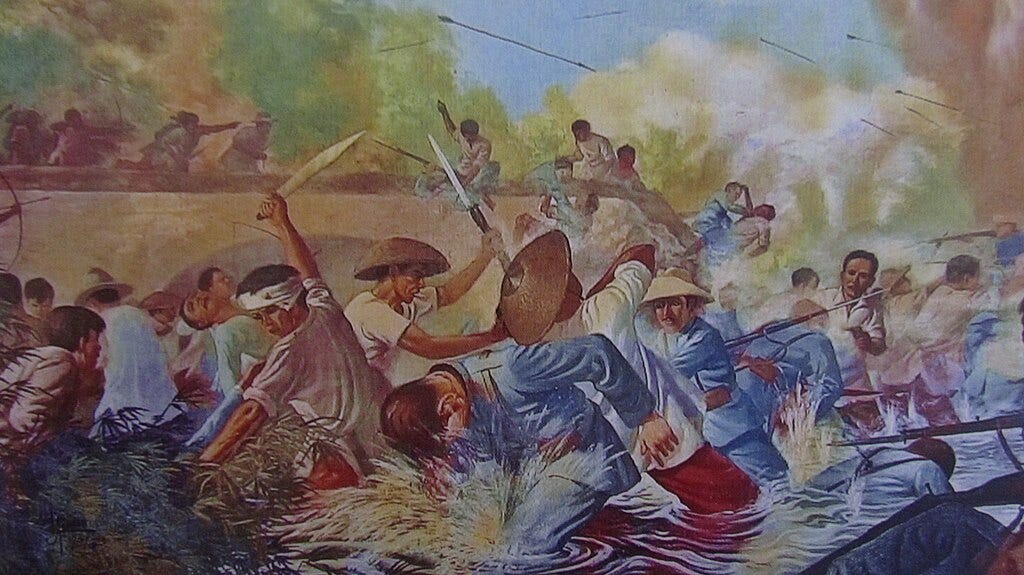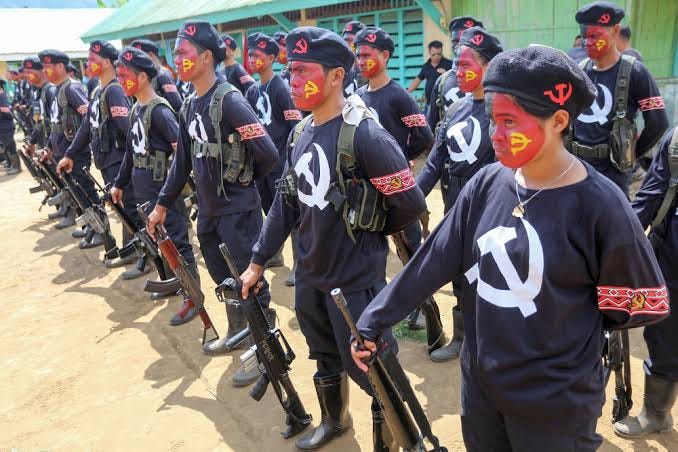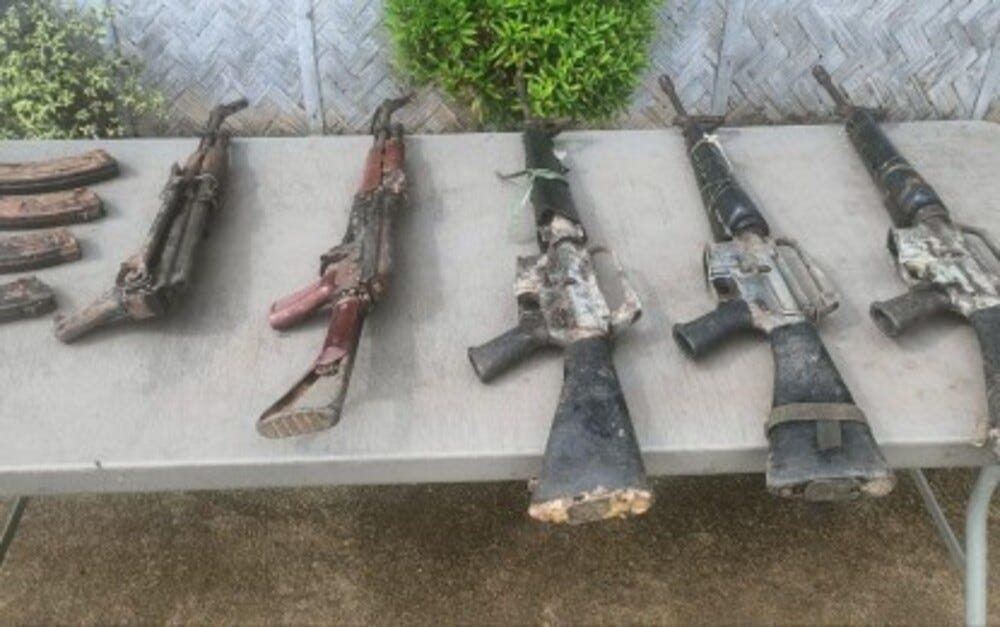The Ongoing Struggle: The New People’s Army and the Philippine Government
A 50-Year Insurgency Shaped by History, Ideology, and Repression
At the beginning of March 2025, a Philippine fighter jet with two pilots on board was shot down during a night combat assault while assisting ground forces fighting communist insurgents in the southern Philippines. The FA-50 lost communication during the mission before targeting a specific area. The other aircraft successfully returned to the airbase. The so-called communist insurgents, belonging to the New People’s Army (NPA), were responsible for the attack. The Filipino government estimates that around 1,000 insurgents are spread across the country, controlling various outposts.
The battle waged by this campesino army against the legitimate government has persisted daily in rural areas, including mountains and jungles, for more than five decades. The war is fought on two fronts: against the Filipino government, accused of acting on behalf of the United States, and against segments of civil society, including wealthy landowners accused of exploiting the working class.
Many questions inevitably emerge: Who is the New People’s Army? When was it founded? What is its purpose? And how is the government addressing it?
The History of the Movement 📜

The Philippines endured 300 years of oppression under Spanish rule until 1898, when Spain was defeated by the United States in Cuba. Although the war was fought in Latin America, the U.S. acquired the Philippines from Spain for $20 million. Filipino forces, led by Emilio Aguinaldo, fought a war for independence between 1899 and 1902 but ultimately surrendered. The United States governed the Philippines until the end of World War II.
The roots of Maoist insurgency may be traced back to the post-WWII period, when the Partido Komunista ng Pilipinas (PKP-1930) led a guerrilla resistance against Japanese occupation. After the war, under the banner of the Hukbalahap Rebellion, the fight continued against the newly independent republic, which was perceived as a U.S. proxy state. In the 1960s, radical leftist ideology, particularly Maoist thought, gained popularity as a revisionist form of Marxism-Leninism.
The Maoist rebellion erupted in 1969 when a radical faction of the PKP broke ties with moderate communists and took up arms against the Filipino dictator Ferdinand Marcos, initiating a protracted war. The leader of the movement was Bernabe Buscayno, also known as “Commander Dante.”
Inclusivity and Relief Activities 🌈

The NPA's strategy is to expand gradually, establishing "red zones" in the countryside, dismantling state control, and encircling urban areas. Despite being a military organization, much of its agenda does not involve direct combat. Before being formally recruited, aspiring soldiers must engage in farming and carry out small tasks in villages controlled by the NPA. The group builds bases in isolated, hard-to-reach areas, taking advantage of jungles, caves, and mountainous terrain. Natural elements such as mist, rain, and dense vegetation provide a degree of protection from government surveillance and drone strikes.
Moreover, the NPA promotes an inclusive agenda, welcoming women, LGBTQ+ individuals, and people from all religious and ethnic backgrounds. It also provides medical services in impoverished rural areas, including vaccinations, infant health care, and wound treatment. During the COVID-19 pandemic, the NPA played a critical role in providing relief. Similarly, in 2013, when Typhoon Haiyan killed over 10,000 people, NPA fighters assisted in reconstructing homes, providing medical aid, and supporting displaced campesinos.
Governmental Red-Tagging and Human Rights Abuses 🚩

Human Rights Watch has accused the Ferdinand Marcos Jr. administration of harassing and threatening union activists by labeling them as communist guerrillas, a practice known as "red-tagging." This strategy pressures labor organizers to abandon their affiliations with unions that openly criticize the government. Filipino law enforcement frequently raids activists' homes, intimidating their families to distance them from the NPA.
Authorities have also intensified their crackdown through social media, targeting and threatening young activists, particularly those using Facebook. The government justifies these actions under the "National Task Force to End Local Communist Armed Conflict" (NTF-ELCAC). Red-tagging escalated during Rodrigo Duterte's presidency after peace negotiations with the Communist Party of the Philippines (CPP) collapsed.
In 2020, the government passed the Anti-Terrorism Act, allowing law enforcement to detain suspects without a warrant or formal charges for up to 24 days. Many activists have been arrested and detained without clear justification.
On March 7, 2021, police conducted raids on union offices in three different provinces, killing nine people. In April 2023, President Marcos approved Executive Order 23, aimed at "improving coordination and expediting the resolution of labor disputes."
Conclusion 📌
At the twilight of the Spanish Empire, the United States liberated Cuba, invaded Puerto Rico and Guam, and purchased the Philippines. After three years of war, President Theodore Roosevelt declared victory over Aguinaldo's forces. During World War II, Filipino rebels fought against Japanese imperialism, and this spirit of resistance was later passed down to the Maoist insurgents, who viewed the newly independent republic as a U.S. satellite state. In the early 1970s, Ferdinand Marcos declared martial law to crush the NPA.
Despite its militant nature, the NPA has distinguished itself by its inclusivity and humanitarian efforts, particularly in providing medical assistance to those in remote areas and aiding communities in times of disaster. Meanwhile, the Filipino government has waged an asymmetrical battle against the NPA for over 50 years. After the failure of multiple peace negotiations, the state has implemented draconian laws to suppress dissent, often targeting individuals with no direct affiliation to the insurgents. Law enforcement has conducted manhunts to track down anti-government activists, and many protesters have been arrested simply for expressing dissent on social media.
The struggle between the NPA and the Philippine government continues to this day.
Please share this post with anyone you think may find it interesting.






Keep up the good work man, Substack is a grind man.